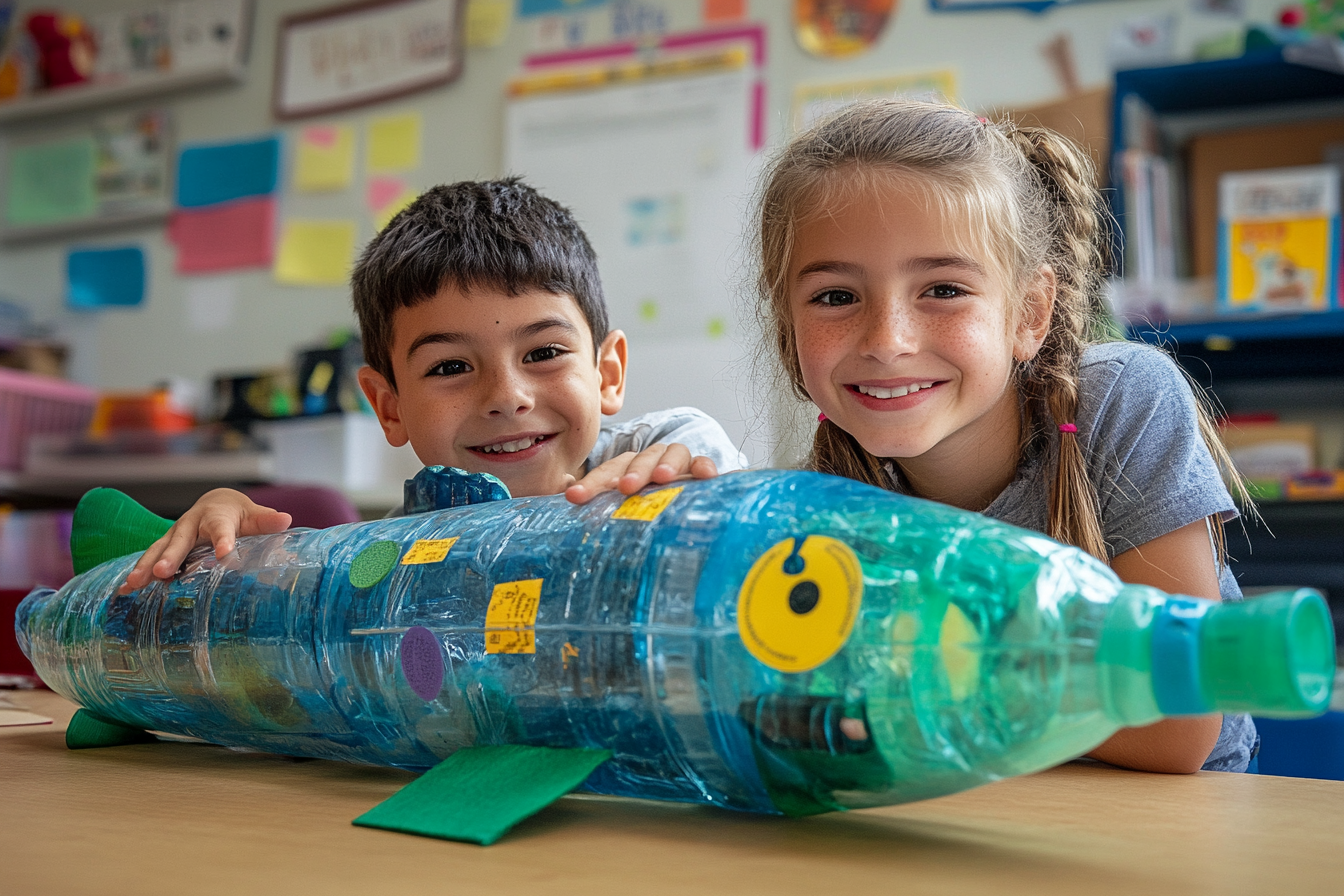Lesson Plan (Grades K-2): Underwater Robotics Relay: Building and Racing Submarine Models
K-2 STEM lesson: build buoyant bottle submarines, explore buoyancy & propulsion, race models, record data, boost problem-solving.

Lesson Title: Underwater Robotics Relay: Building and Racing Submarine Models
Grade Level: Grades K-2
Subject Area: Science/Engineering
Overview: In this lesson, students build and race simple “submarine” models using plastic bottles and propellers (manual or battery-powered) to explore buoyancy, propulsion, and basic circuitry. Through hands-on design, testing, and iteration, students learn how weight distribution and motor placement impact a model’s ability to float and move straight. This activity encourages collaboration, critical thinking, and foundational engineering principles.
Objectives and Standards
Learning Objectives:
- Students will demonstrate how adding or removing weight (modeling clay) affects a submarine’s buoyancy (float, sink, hover).
- Students will explore propulsion by attaching and testing a manual propeller or a simple battery-powered motor to their submarine models.
- Students will iteratively adjust their submarine designs—tweaking buoyancy and propeller alignment—to achieve straight-line movement across a water table.
- Students will collaborate in pairs, record observations in a simple data sheet, and explain how their design changes improved (or hindered) performance.
Standards Alignment:
- Next Generation Science Standards (NGSS):
- K-2-ETS1-1: Ask questions, make observations, and gather information to define a problem (design a submarine that floats and moves straight).
- K-PS2-1: Plan and conduct an investigation comparing the effects of different strengths or directions of pushes on an object’s motion (propeller thrust).
- Common Core State Standards (CCSS) for Mathematics:
- K.MP.2: Reason abstractly and quantitatively when predicting how far a submarine will travel.
- 1.MD.A.1: Compare lengths of submarines and measure distances traveled in the water table race.
